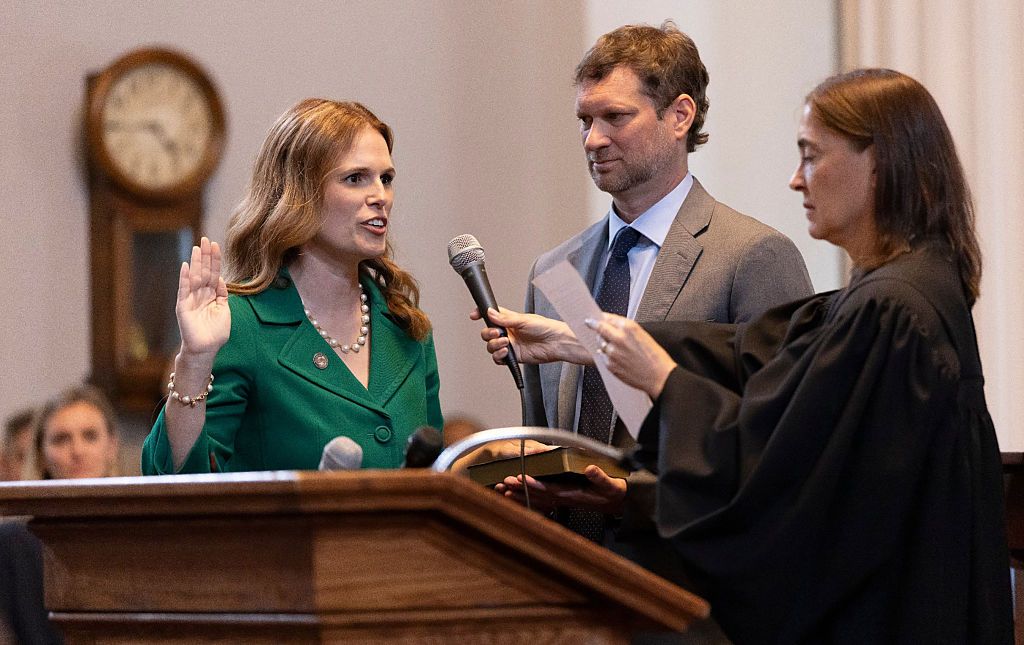For over a decade, federal courts have steadily retreated from protecting voting rights. However, there is one line they appear unwilling to cross: intervening after an election is over to change the rules about which votes should count. The latest rejection of post-election subversion—or attempting to flip the result of an election after the fact—came in a ruling last week upholding the results of a North Carolina Supreme Court race.
[time-brightcove not-tgx=”true”]
Outside of North Carolina, the ruling reverberates, sending a clear message to those who might try to subvert the 2026 elections: your efforts won’t succeed.
The election for a seat on North Carolina’s high court was decided in November 2024 by a razor-thin margin of 734 votes in favor of incumbent Justice Allison Riggs. That outcome was confirmed by two recounts. Nonetheless, her opponent, Judge Jefferson Griffin, challenged the results in state court in the weeks and months following Election Day in an extraordinary effort to throw out more than 60,000 votes after the election was over. Griffin didn’t argue that the voters broke the rules in some way. Instead, he claimed that the rules that governed the election should be changed after the fact and that the ballots of voters that didn’t comply with those rules should be tossed out.
At first, Griffin’s pitched battle in the state courts saw temporary success. Both the North Carolina appeals court and the North Carolina Supreme Court allowed some of the votes in question to be tossed out—a stark deviation from other courts who considered and dismissed such claims in the last few years.
Had those decisions been allowed to stand, the ramifications would have been disastrous. Not only would they have set a terrible precedent in North Carolina’s courts, but they would have also invited losing candidates to use the courts to selectively invalidate certain voters that don’t skew in their favor. Rogue officials would have been able to re-interpret the rules post-election and test whether courts would stop them. It would have fundamentally undercut the will of the people and allowed politicians to pick their voters, not the other way around.
Instead, when the case reached federal court, the court refused to be used as a tool for election subversion. A conservative federal judge, appointed by President Donald Trump, ordered that the election be certified in favor of Riggs, explaining that changing the rules after the election would violate voters’ federal constitutional rights.
The court preserved this most basic tenet of democracy. It cemented the principle that voters who follow the established rules at the time of an election must have their votes counted. For future elections, it closed the door on similarly fraught post-election contests. Prompted by this ruling, Griffin conceded the race, six months after the election.
And this one court’s ruling is not an outlier.
After the 2020 election, Trump and his allies filed over 60 lawsuits challenging the outcome. Over and over, the courts tossed aside these attempts to change the outcome.
In 2022 and 2024, we saw more sophisticated—but not more legitimate—attempts to subvert elections and to use the courts as a means toward that end. There were refusals to certify valid election results and even an extensive campaign of litigation in advance of the 2024 election that seemed designed to cue up disputes for after the election. Both federal and state courts shut down these efforts.
To be clear, this does not indicate that we should count on federal courts to protect voting rights from the all-out assault being waged across the country. In fact, federal courts have recently made it harder and harder to ensure fair rules and equal access to the ballot before and during elections. Most notably, the Supreme Court hollowed out key portions of the Voting Rights Act of 1965, one of the most significant civil rights laws in our nation’s history, in the 2013 Shelby County v. Holder decision.
Since then, there have been many more bad decisions that, among other things, cut off any avenue for stopping partisan gerrymandering in federal court and made it exceedingly difficult to stop restrictive voting rules in an election year. Just this week, the Eighth Circuit Court of Appeals issued a disastrous ruling that, if it stands, would effectively end the ability of anyone other than the Justice Department to enforce the Voting Rights Act in seven states across the middle of the country. The retreat of the federal judiciary from its long-time role as a reliable institutional protector of voting rights in the last few years has severed some much-needed trust in our elections.
But at a moment when election deniers seed doubt about our elections, attempt to disrupt election processes and procedures, and use extreme tactics to try to overturn outcomes, this ruling in North Carolina draws an important line in the sand.
Our democracy is far from perfect, but this line matters ahead of this year’s and next year’s elections. From federal courts, the message is clear: as the district court in North Carolina put it last week, you can’t “change the rules of the game after it had been played.”

